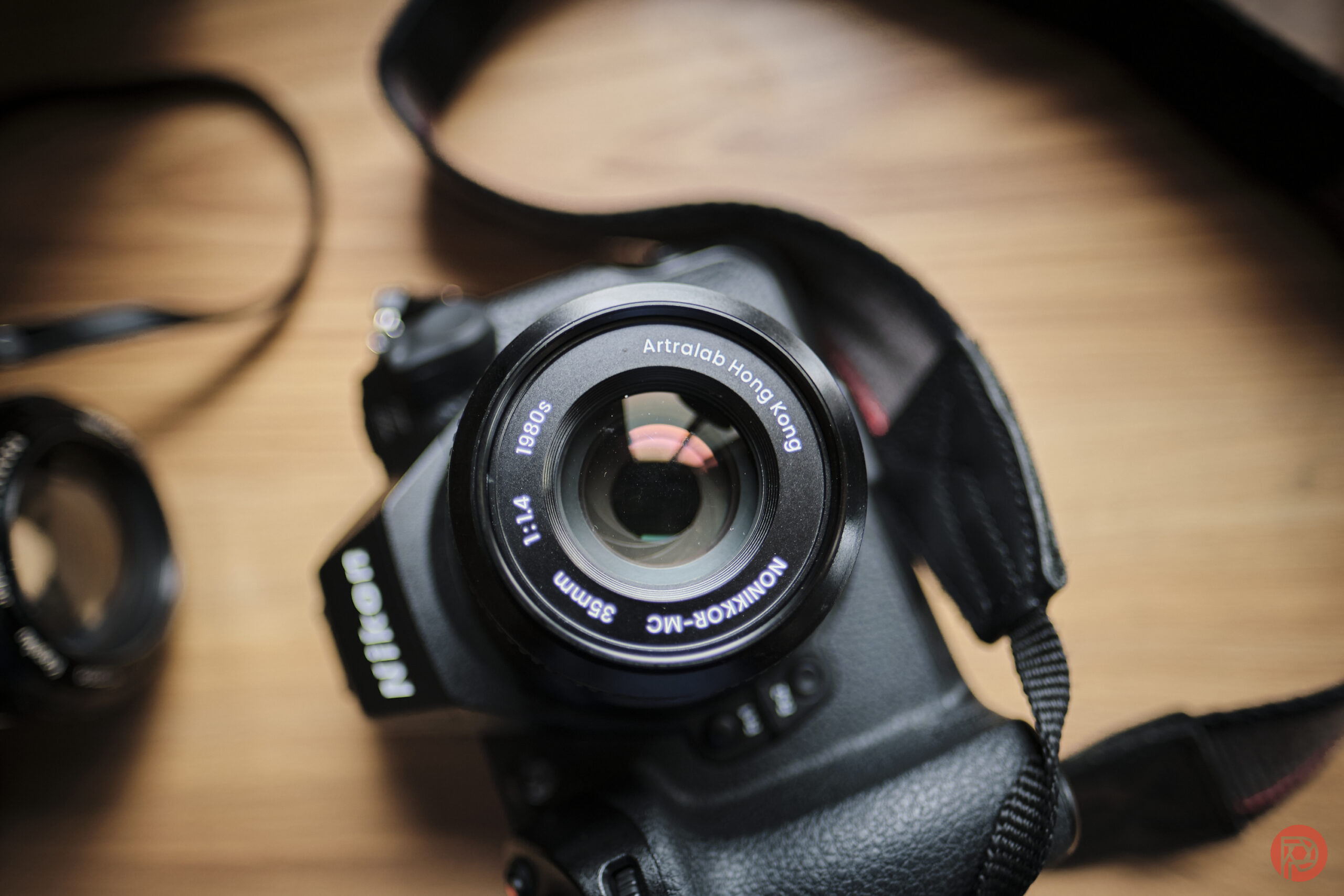I didn’t totally know what to expect from the Artralab 35mm f1.4 lens. But we were quickly swept away when we first caught wind of it. The idea that so many new companies are popping up to bring back the vintage look that we adore is heartwarming — especially when there’s so much monotony in the photography industry. We established a genuine press relationship with ArtraLabs, and they understand the differences in approach with us having a hard form of ethics. Frankly, I’m slowly falling in like with the Artralab 35mm f1.4 1980s edition.
Editor’s Note: This is not a review. It is a preview we’re producing after spending a few hours with the lens. And the full review is coming soon.
The Phoblographer may receive affiliate compensation for products purchased using links in this blog post.
Table of Contents
Tech Specs
These tech specs are taken from the official website:
| Lens brand: | ARTRALAB |
| Model: | NONIKKOR-MC 35mm F1.4 (Full Frame) 1980’s |
| Lens mount: | Nikon Z, Sony E, L Mount (Leica / Sigma / Panasonic) |
| Whether to support full frame: | Yes |
| Lens filter size: | 52mm |
| Style classification: | 1980’s |
| Weight: | 201g-300g |
| Maximum aperture: | F1.4 |
| Lens type: | Pure Manual Lens |
| Lens anti-shake function: | Without anti-shake |
| Focal length: | 35mm |
| Shooting Scene: | Landscape, Architecture, Still Life, Insect, Tourism, People |
Ergonomics
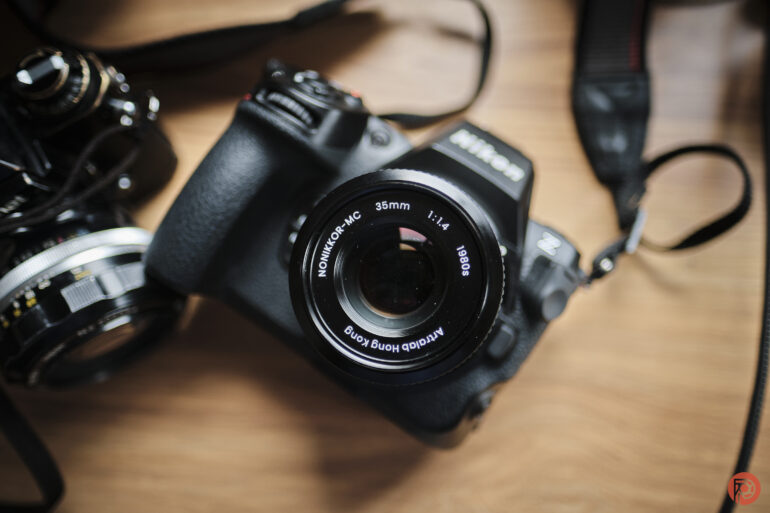
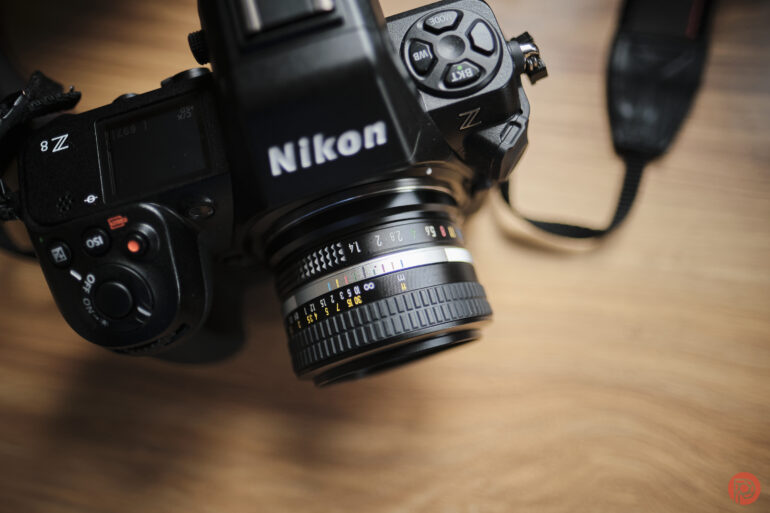
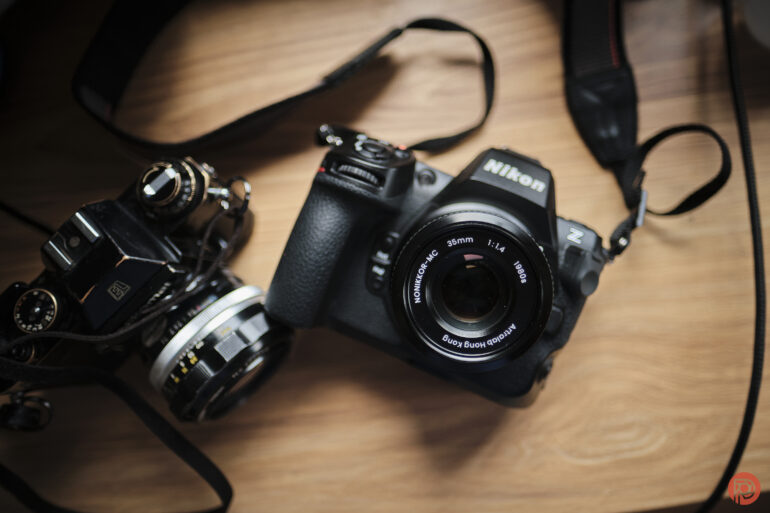
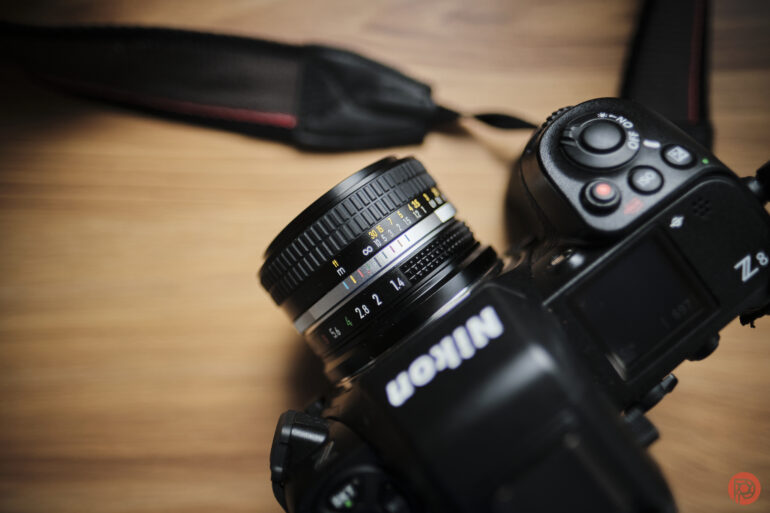
The Artralab 35mm f1.4 1980s edition is a beautiful gem of a lens. If you didn’t know any better and were quickly glancing at it, you’d think it was a vintage Nikon lens — providing you knew what you were talking about. That’s precisely what you’re getting here. This variant is made for Nikon Z mount. One of the big things missing is the bunny ears, and that’s because it doesn’t have an aperture lever to move.
There are two controls: an aperture ring and a focusing ring. The aperture ring clicks in full stops and does so with a nice tactile feeling akin to a slight vibration that an iPhone would give you. The focusing ring feels quite nice as well too!
Build Quality
I wasn’t quite sure what the Artralab 35mm f1.4 was made of when I got it. It seems to be this odd form of plastic that both Olympus and Canon have used, designed to look and feel like metal — though it isn’t. This material helped the Canon AE1 skyrocket in sales. That’s a fascinating story in and of itself, with Canon’s engineers being against plastic. However, after a lot of work, they accepted it.
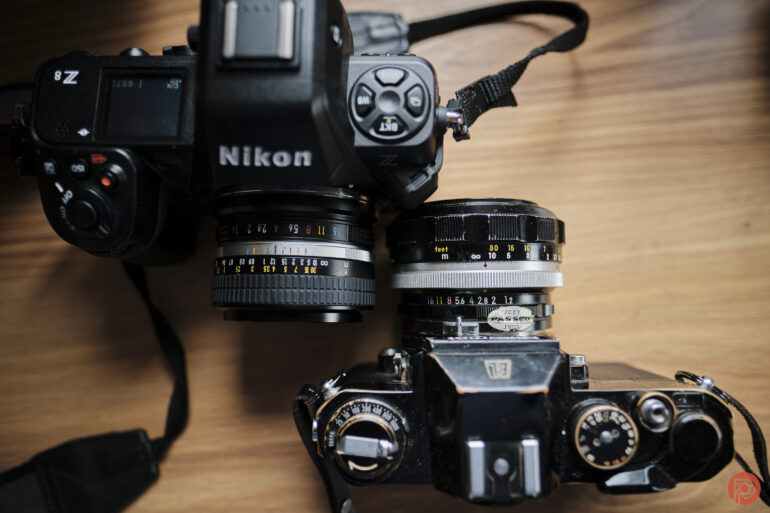
It could’ve fooled me! But I put it in the hands of one of the Phoblographer’s Nikon reps. He made me believe that it is indeed mostly metal. The focusing ring doesn’t feel like it. But the silver ring, aperture ring, and front barrel get cold just like metal. Thankfully, NY’s summer hasn’t been sweltering thus far — so we’re pretty confident that this is metal. Grandpa Rockwell doesn’t say a lot about the build quality of this lens, unfortunately.
However, it doesn’t have weather resistance. To be fair, the original lens from the 1980s didn’t have it either. This lens variant is made for Nikon Z mount, so it lacks the bunny ears that the original said.
Ease of Use
The Artralab 35mm f1.4 is a small lens with a small depth of field scale. That said, it’s a straightforward experience if you’re not using the depth-of-field scale. However, there aren’t electronic contacts with this lens, so it won’t communicate very much with the camera. Nikon’s focus peaking is relatively good with the Nikon z8, but it probably doesn’t need it. You can see what’s in focus more or less, even when shooting wide open.
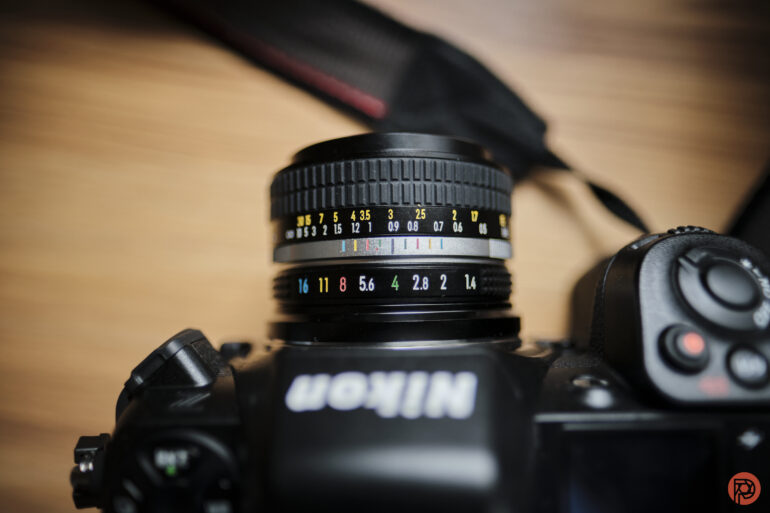
The depth of field scale is color-coded according to the apertures. The green bars correspond to the green f4, while the red bars correspond to the red f8. And, of course, what’s in between will need to be a guesstimate. This sometimes makes the lens harder to use. I’ve often found that f5.6 and focusing 5 or 6 feet away is best for street photography using a 35mm lens. But that’s admittedly a bit harder here, and I’m not totally sure if the focusing scale is perfectly accurate and calibrated.
I’ve only spent a few hours with the lens so far. So our full review will have more of a report.
Focusing
Focusing, of course, is done manually. If you enjoy the tactile feeling that photography is so desperately missing, then the Artralab 35mm f1.4 will hit a home run, especially when priced under $400. Turning the focusing ring is a smooth experience that feels nice — though not as lovely as turning a German lens. Some folks might liken it to being buttery smooth, but this is an outdated and inaccurate finding. Think of it more as rubbing melted coconut oil on your skin with enough pressure to stimulate the blood flow in the veins you’d otherwise feel in a massage.
If that sounds nice to you, then sign yourself up.
Image Quality
The following images were shot with the Artralab 35mm f1.4 using the Nikon z8. We’re saving our commentary for later when we’re done with our full review. But you can get a feeling of things like flaring and all from these samples.
My thoughts so far: It’s sharp enough for what it is, and I don’t think you should necessarily buy this lens if you want to produce images so sharp that it will cut you when you’re looking at it. That’s a nice thing overall, combined with the bokeh. I typically shoot with my cameras locked to daylight white balance or tungsten. And when you do that, you’ll get beautiful colors that make the scene have a bit more romance.
Edited
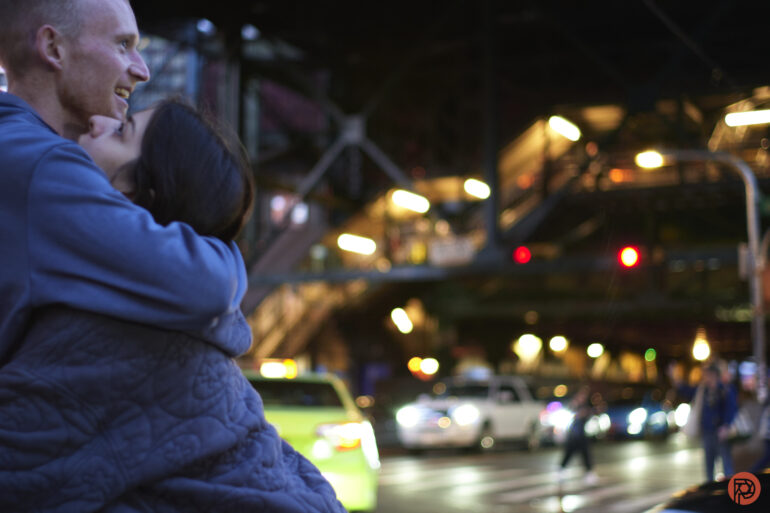

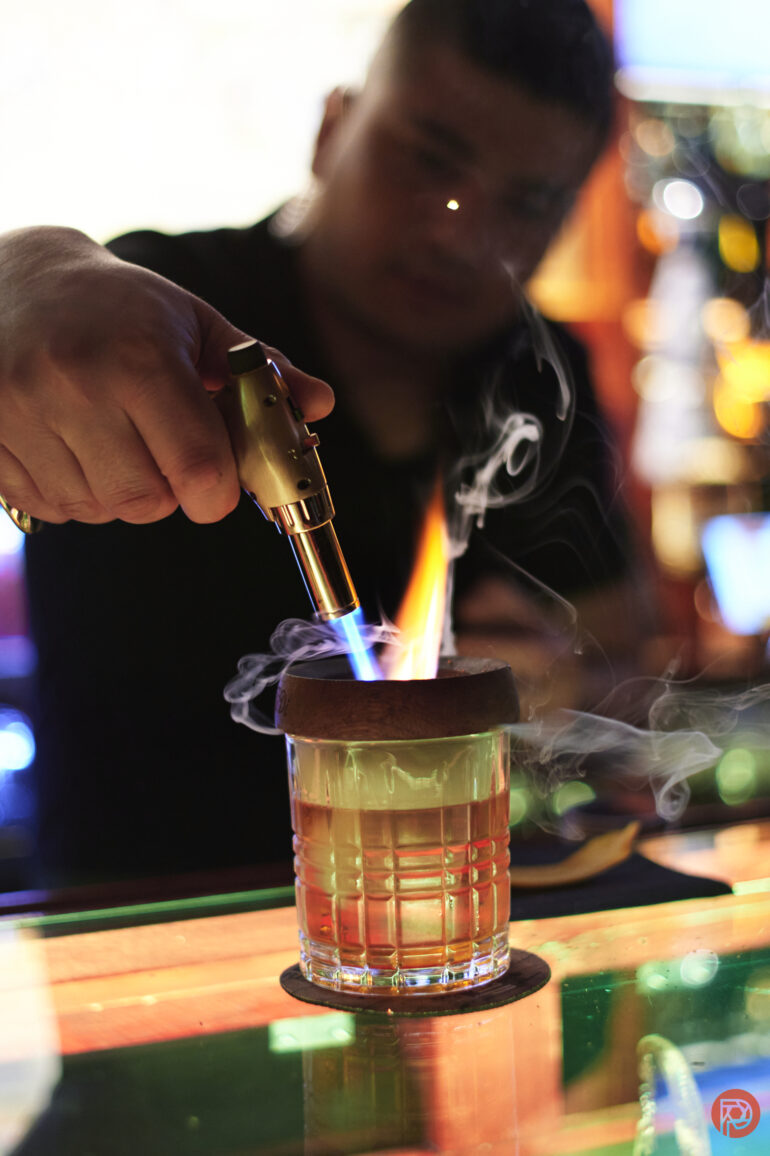
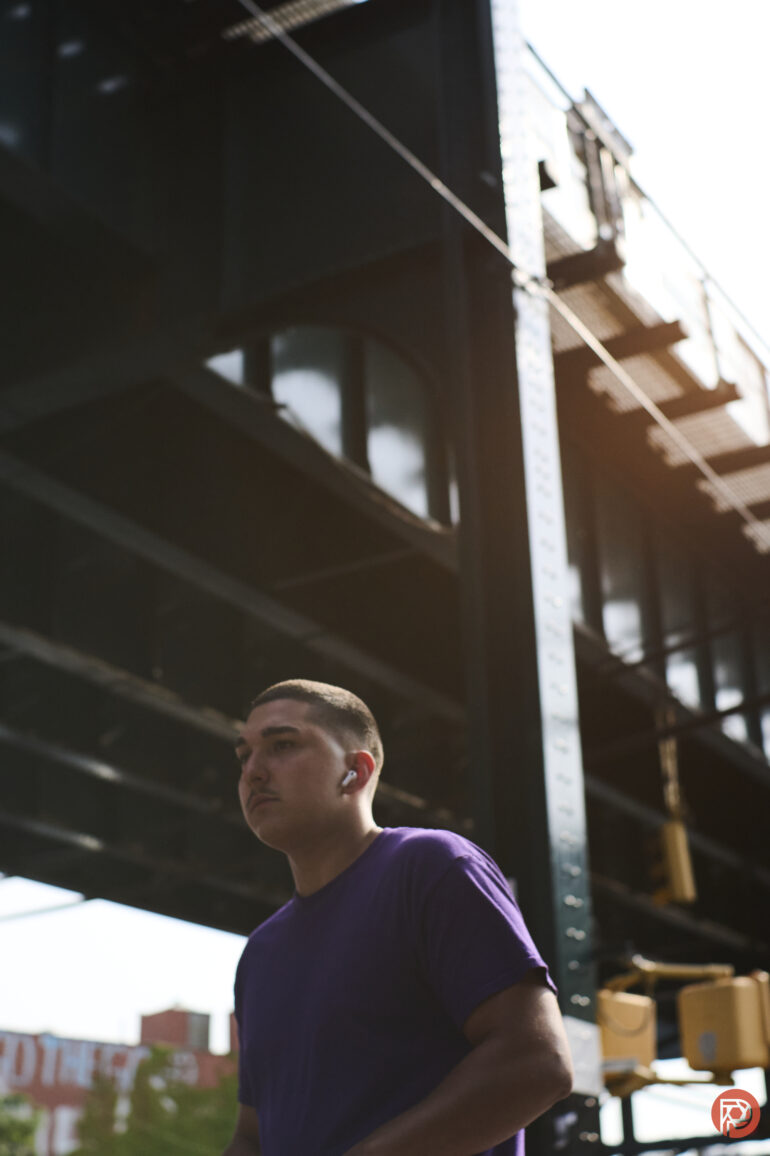

Unedited


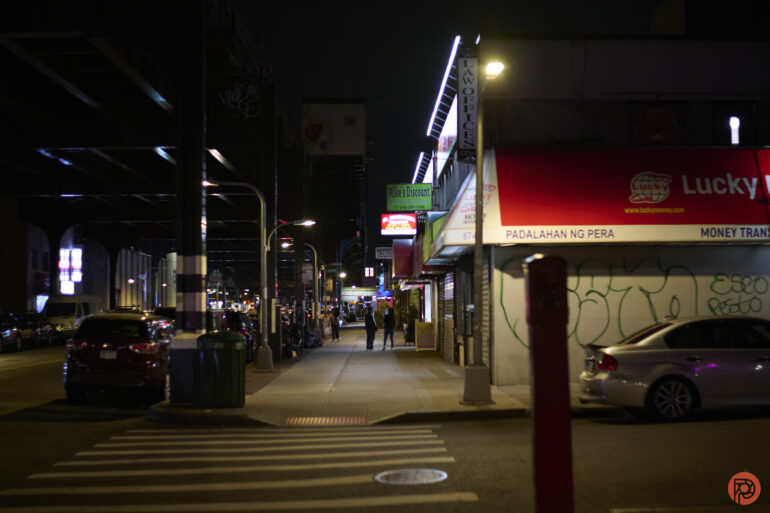
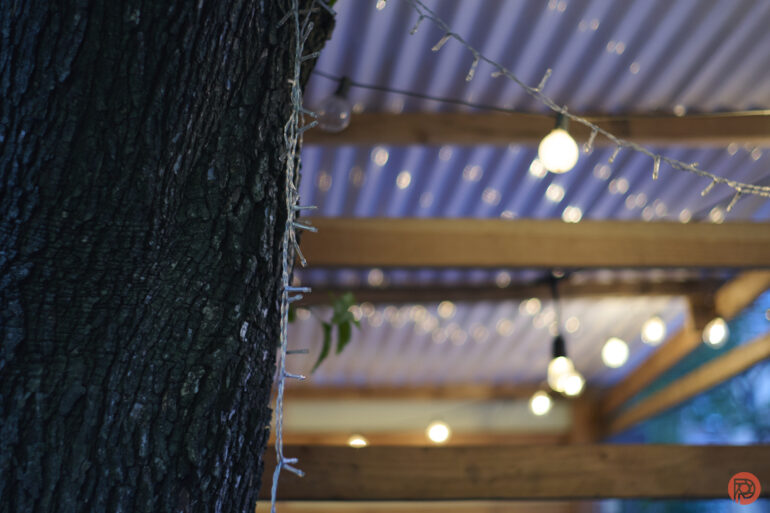

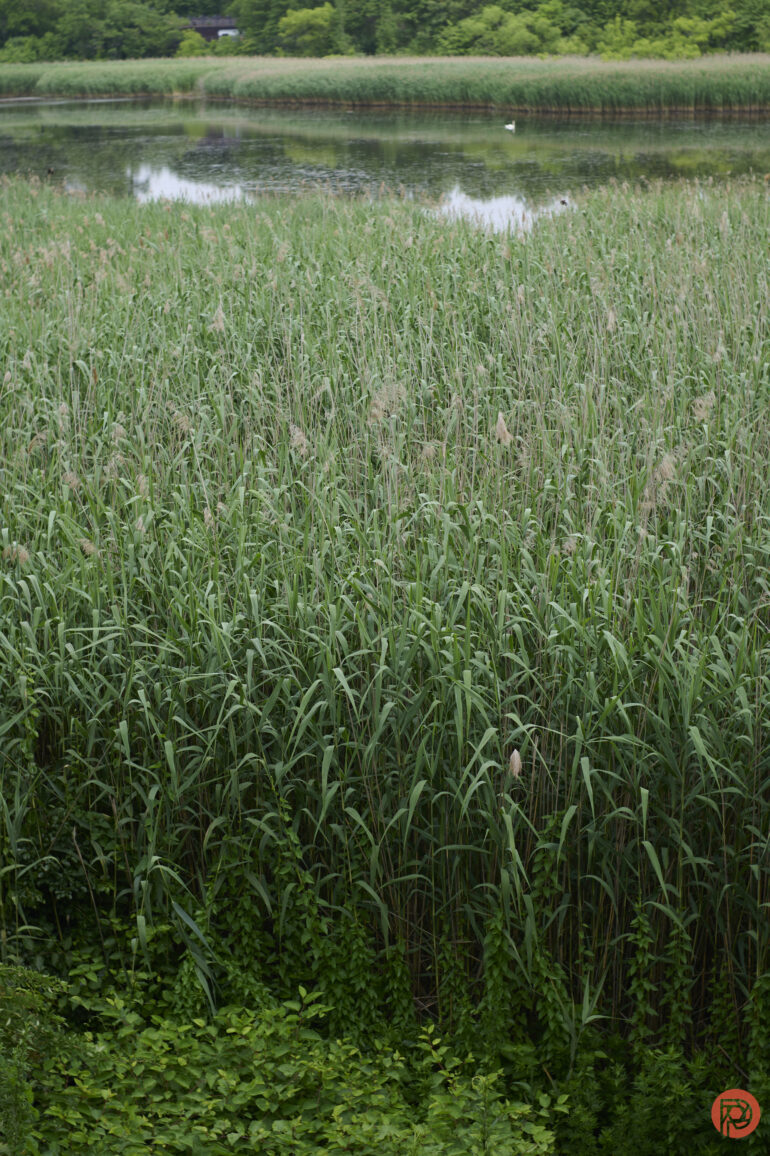

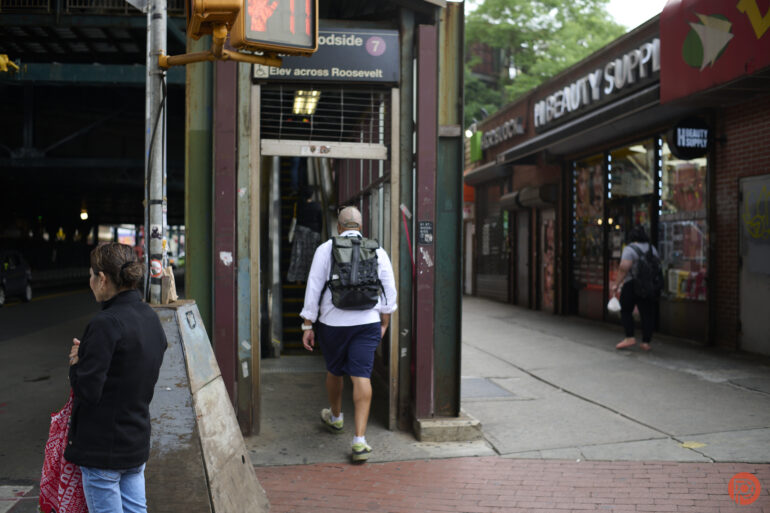




First Impressions
So far, we’re pleased with what the Artralab 35mm f1.4 can do. It delivers beautiful image quality while, at the same time, giving me the experience I’ve craved for so long from camera manufacturers. I hope that Artralab does well with the sales of this product because it deserves it.
That’s my belief from testing it for a few hours, though. Let’s see how it does otherwise! Stay tuned for a full review.


